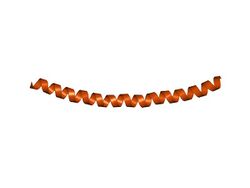Biology:Phage major coat protein
Redirect to:
This article relies largely or entirely on a single source. (February 2015) |
| Phage coat Gp8 | |||||||||
|---|---|---|---|---|---|---|---|---|---|
 Single subunit of coat protein | |||||||||
| Identifiers | |||||||||
| Symbol | Phage_Coat_Gp8 | ||||||||
| Pfam | PF05371 | ||||||||
| Pfam clan | CL0371 | ||||||||
| InterPro | IPR008020 | ||||||||
| SCOP2 | 1fdm / SCOPe / SUPFAM | ||||||||
| OPM superfamily | 67 | ||||||||
| OPM protein | 1ifk | ||||||||
| |||||||||
In molecular biology, a phage major coat protein is an alpha-helical protein that forms a viral envelope of filamentous bacteriophages. These bacteriophages are flexible rods, about one to two micrometres long and six nm in diameter, with a helical shell of protein subunits surrounding a DNA core. The approximately 50-residue subunit of the major coat protein is largely alpha-helix, and the axis of the alpha-helix makes a small angle with the axis of the virion. The protein shell can be considered in three sections: the outer surface, occupied by the N-terminal region of the subunit and rich in acidic residues that give the virion a low isoelectric point; the interior of the shell (including a 19-residue stretch of apolar side-chains) where protein subunits interact, mainly with each other; and the inner surface (occupied by the C-terminal region of the subunit), rich in positively charged residues that interact with the DNA core.[1]
References

